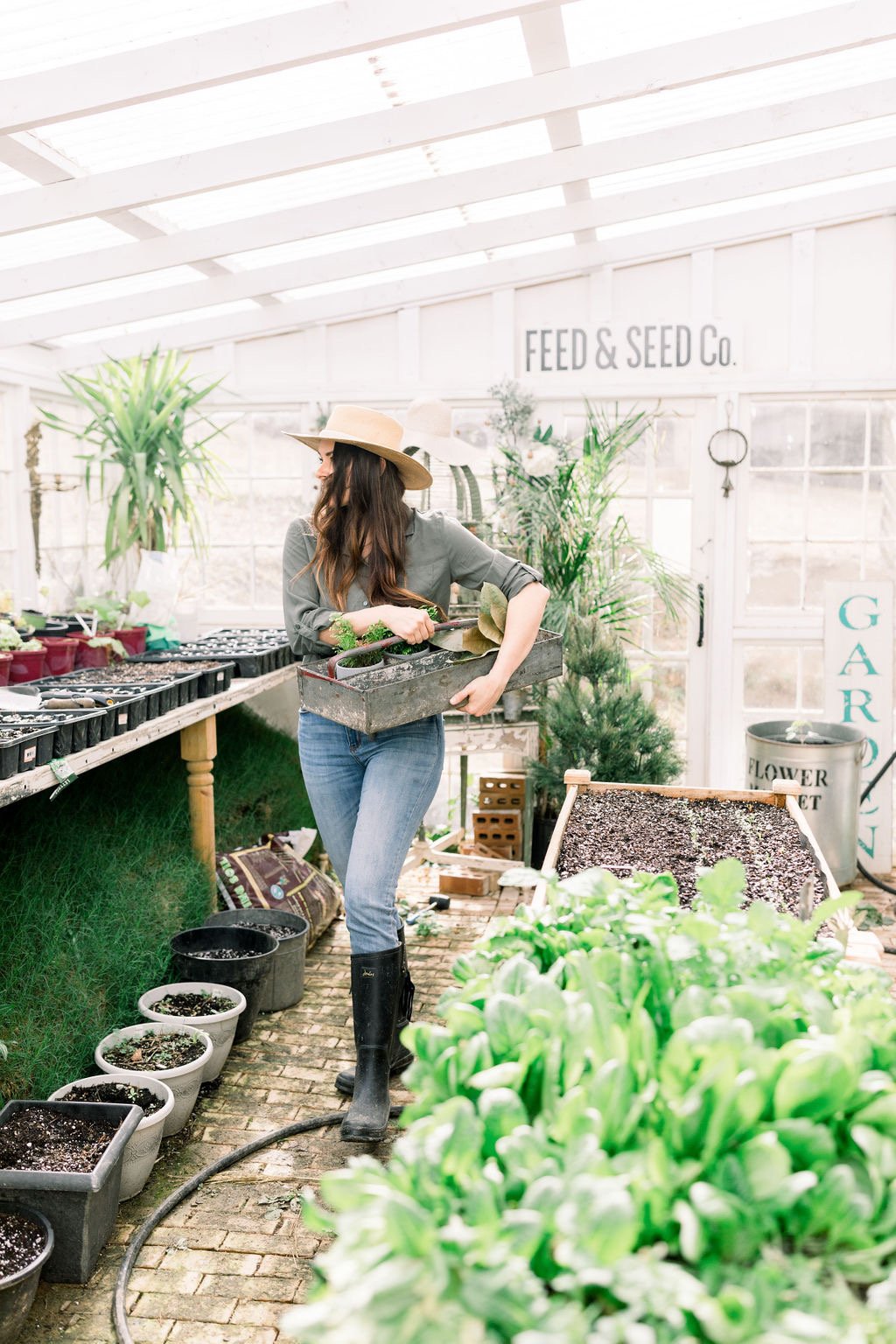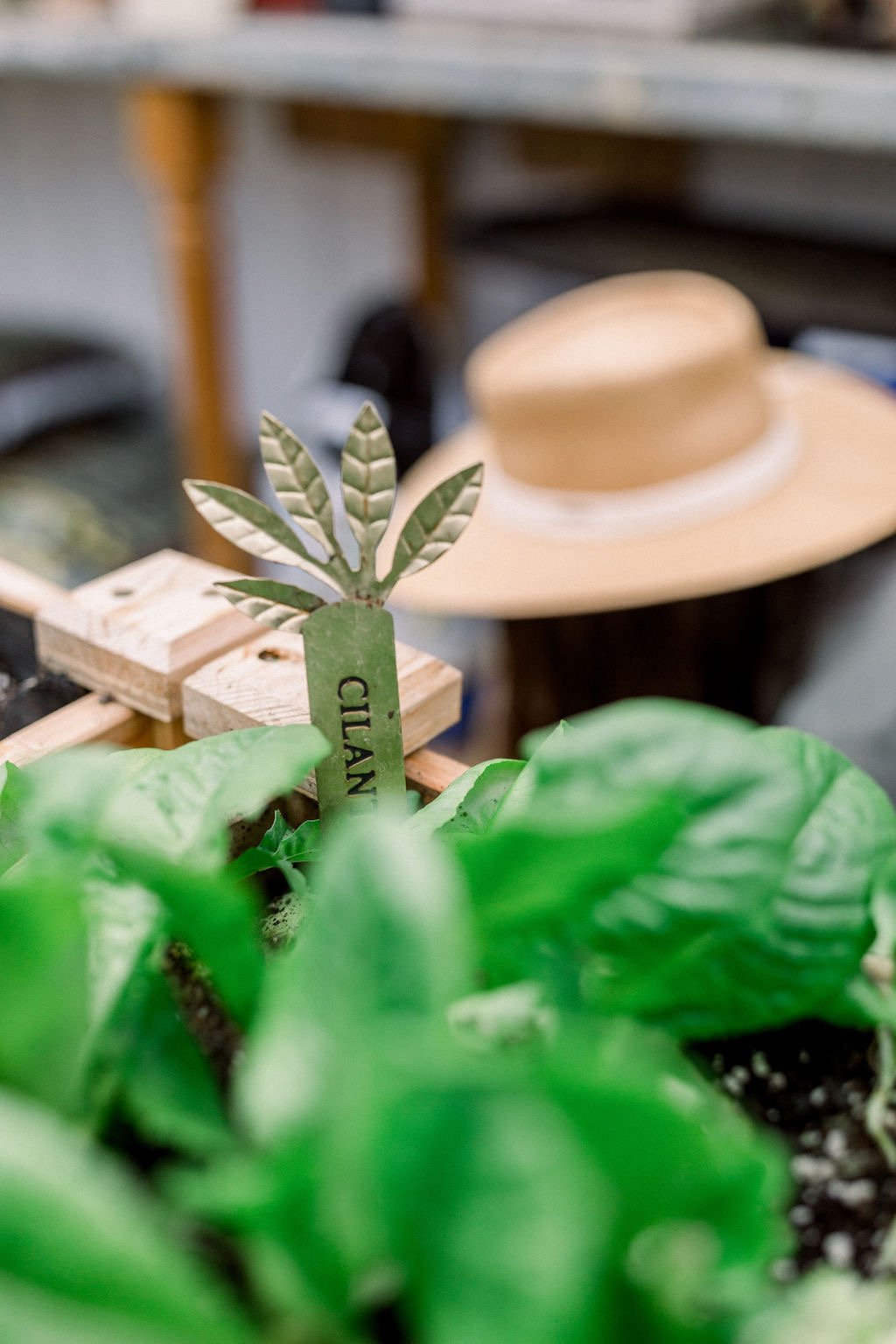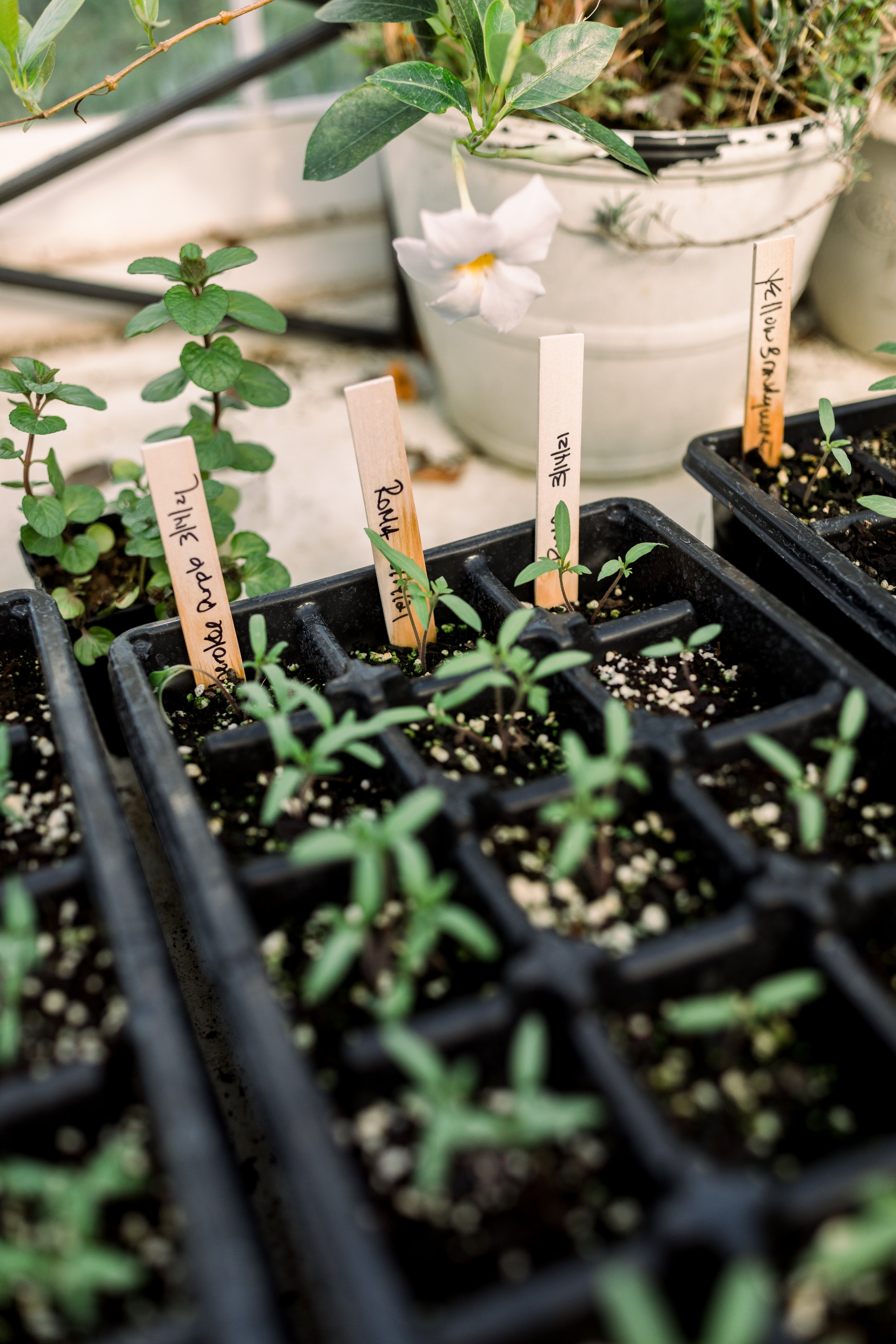The Best Vegetables to Grow Indoors and How to Get Started
Finally, it's time to get these green fingers working again! The greenhouse is cleaned, organized, and ready for me to grow some delicious veggies indoors!
Indoor gardening gets me all excited as it allows us to enjoy some of our favorite veggies all year round, unlike outdoor gardening.
Although I love growing veggies in our greenhouse (and do most of the time as it is the best), I can also direct sow vegetable seeds in pots and grow them in our home.
This allows us easier access (especially during winter) when needing something for cooking or just to eat straight from the plant!
Having plants in ones home really makes it a happier place!
I want to emphasize that indoor gardening is not limited to a greenhouse. If you have a sunny spot in your home, there's definitely something you'll be able to grow!
If you want to set up a greenhouse but are not sure where to start, here’s how to design the perfect greenhouse for year-round indoor gardening.
With the right tools, methods, and growing conditions, indoor gardening can be successful!.
You can manage the conditions to be ideal for the specific plants, and the plants are also not exposed to all the elements, critters, and pests!
Tips for indoor gardening
If you are an absolute beginner and scared to start with seedlings or pushed for time, you can also start with transplants. You will find a variety of vegetable transplants at your local nursery. Keep in mind that some veggies like carrots and radishes are best grown from seeds.
When buying seeds, consider the following:
If the variety can be started indoors and what the best planting time is.
The days to maturity. In other words, how long it will take before they produce fruit. (More on this further down).
What the plant's water and light requirements are.
The plant's soil needs. I.e., potting soil or a porous, fine-grained seed starting mix. The latter is often used for very tiny seeds to start off with, and as they grow, they need to be transplanted into potting soil.
Most of this info you should find on the seed package.
HERE is a blogspot with more information on ordering seeds.
Things that are key for successful indoor gardening
Adequate lighting. Your plants will grow best near a south-facing window and should get at least 6-8 hours of light per day. If you only have east or west-facing windows, consider adding growing lights.
The best temperature for indoor plants ranges between 60 - 75 degrees F. Above 75°F is too high for most plants indoors. However, outdoors, they would be fine. They cannot tolerate high temperatures indoors because they don't have the same conditions, such as air humidity and sunlight, which promote growth without confining the heat. When the temps are too low, it significantly damages a plant's growth and causes plant death.
Proper air circulation is also vital to ensure the plant gets enough carbon dioxide and prevent root rot and fungal problems.
Plants grown inside will need more frequent fertilizer. The frequency of application depends upon the product and varies from every 2 weeks to once every 3 to 4 months.
Consider growing plants with similar light, humidity and watering need together. This will make caring for them much more manageable
Giving the correct amount of water. This may differ from plant to plant and should be monitored. We are often inclined to give too much water, leading to root rot and death. The best is to let the soil guide you. It is time to water if it's dry about 1-2 inches down.
The best vegetables to grow indoors
What you will grow will greatly depend on your available space, the purpose for the plants, and your conditions.
HERBS
Herbs are great to start with as they are easy to grow and compact, taking up little space. Herbs will grow very well from seedlings.
Herbs such as basil, parsley, cilantro, chives, oregano, mint, and rosemary will all grow very well indoors year-round. Like vegetable plants, they need direct sunlight and the correct temperatures. They must be kept consistently moist but not overly wet.
Harvest herbs a little at a time; otherwise, you could cause distress and even kill the plant. Regular trimmings will also encourage new growth.
CARROTS
Smaller carrot varieties are the easiest to grow, need less space, and mature quicker. Carrots don't require as much sunlight. 4-5 hours would be fine. But, more light would make them grow faster.
Ensure you have a deep enough container, at least 12 inches deep. Or, if the container is more shallow, you could harvest them as baby carrots. Cover the seedlings with peat moss to retain the moisture. They will sprout within 2 weeks, and baby carrots will mature within 40 days.
PEPPERS
Peppers need enough space to grow, and a container of at least 8 inches tall should work fine. It also requires a lot of sunlight, at least 10 hours per day. Let the soil dry out between waterings.
Depending on the variety, germination should occur between 14-28 days. You can expect sweet varieties to mature within 60 to 90 days, while their muy Caliente cousins may take up to 150 days to mature.
SALAD GREENS
Baby greens like lettuce, arugula, basil, spinach, chard, red mustard, and microgreens like radish, broccoli, lettuce, mustard greens, peas, and sunflowers all work wonderfully indoors. They are shallow-rooted and quick to grow.
A container 2-4 inches deep will work well. They need moist, well-drained soil. Keep the pots in a warm location until they sprout, and then move them to a sunny window where they will get a lot of sunlight. The baby salad greens may require as much as 12 hours of light for healthy growth.
Microgreens are ready to harvest in about 14 days. Clip the seedlings off close to the soil. Baby salad greens will be ready in about 3 to 4 weeks. Trim them off at the base, starting with the outer leaves first.
RADISHES
Radishes grow well in containers and are extremely fast-producing. They require 6-8 hours of sunlight, a container of at least 6 inches deep, and well-drained, loose soil.
If the soil is dry to the first knuckle, give it a proper deep watering until the water starts pouring out of the bottom. Only add fertilizer before sowing the seeds, but not afterward.
Radishes will sprout within a week or less, and you can expect your first harvest between 30-45 days.
SCALLIONS & GARLIC GREENS
Scallions are an excellent perennial indoor crop. So, you can keep it going all year long for continuous harvests without replanting!
Put a bunch of scallions in 1-inch water, and plant them in a shallow container to continue growing when the roots have reached a few inches long. Harvest the green tops, leaving an inch of the stem.
Garlic is another perennial plant that can keep going if you don't harvest the bulb. The garlic won't form a bulb due to a lack of winter chills, but you'll be getting garlic greens from your plant that are just as delicious!
Plant the cloves 2 inches apart and 2 inches deep. Your first harvest will be within 14-21 days! Simply cut off a few inches of the stem and slice or chop it into your food.
If you want to plant garlic outside to harvest bulbs, you will have to wait till the fall. Here’s my guide on how to grow garlic cloves
Always research your hardiness zone to determine when you can plant what, indoors and outdoors. Your seed packets will often indicate how many weeks to plant before your last frost date.
For my hardiness zone, 7b, I can also start celery, parsley, and leeks indoors in January and beginning February broccoli, cabbage, cauliflower, and kale. And when the weather warms up in a few months, I'll be transplanting them outside.
How to start vegetables indoors
Get containers with draining holes and a drip tray. Terra cotta pots, plastic pots, wooden planters, and window boxes work well.
Fill with organic, high-quality potting soil or seed-starting soil. Don't use soil from your garden as it could contain diseases and pests and are too dense for seeds.
Add organic, slow-releasing fertilizer to add to your soil before planting your seeds.
Cover your seed with only a thin layer of soil.
Water them well at the beginning.
Mist or lightly water the plants every couple of days or, as mentioned earlier.
Watch them sprout, grow, and enjoy!
If you want to learn more on how to start seeds, have a look at our seed starting basics guide.
I hope you find this guide helpful and may you grow delicious vegetables and herbs this year!
Love, Annette xx
PIN FOR LATER











